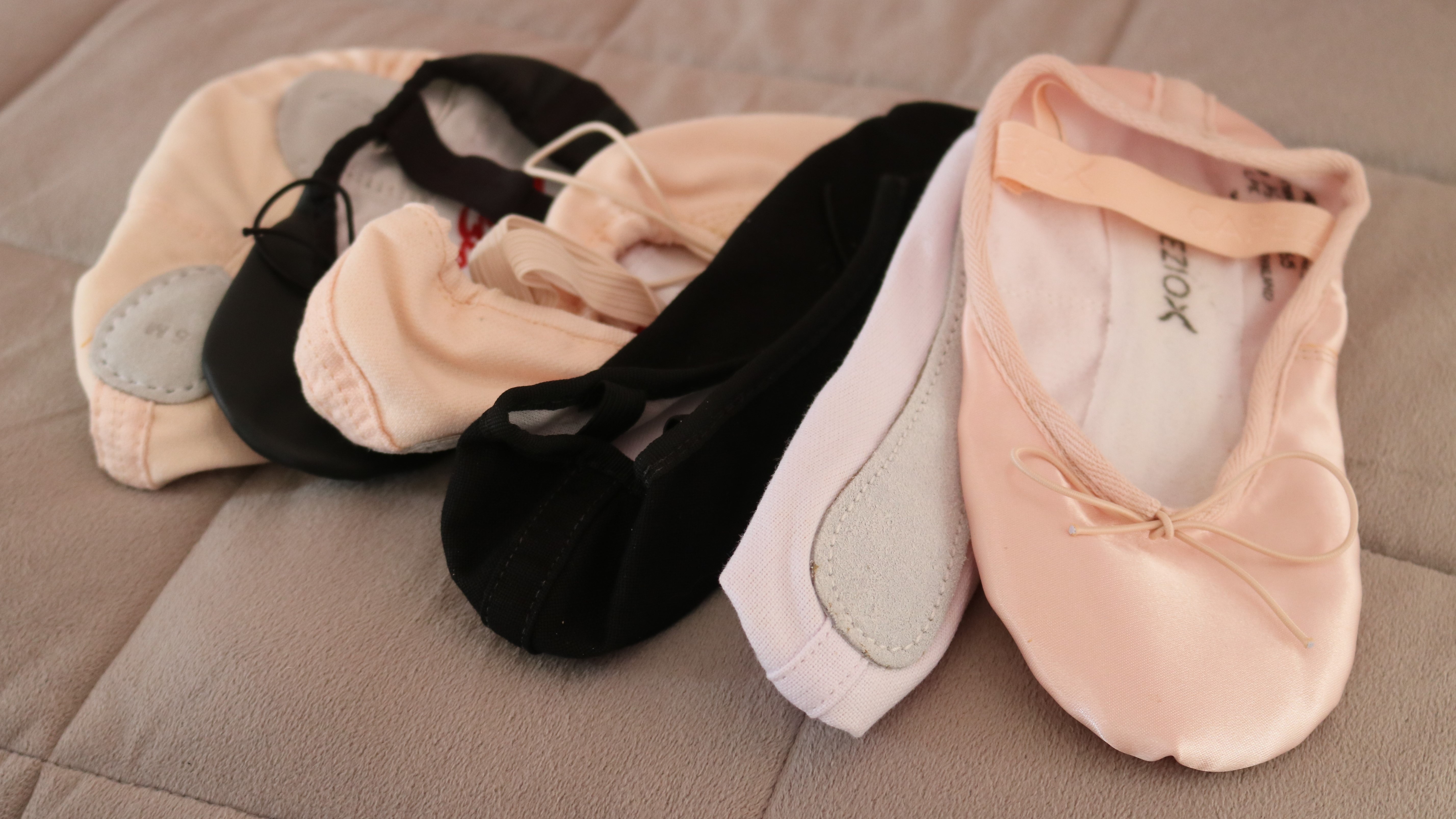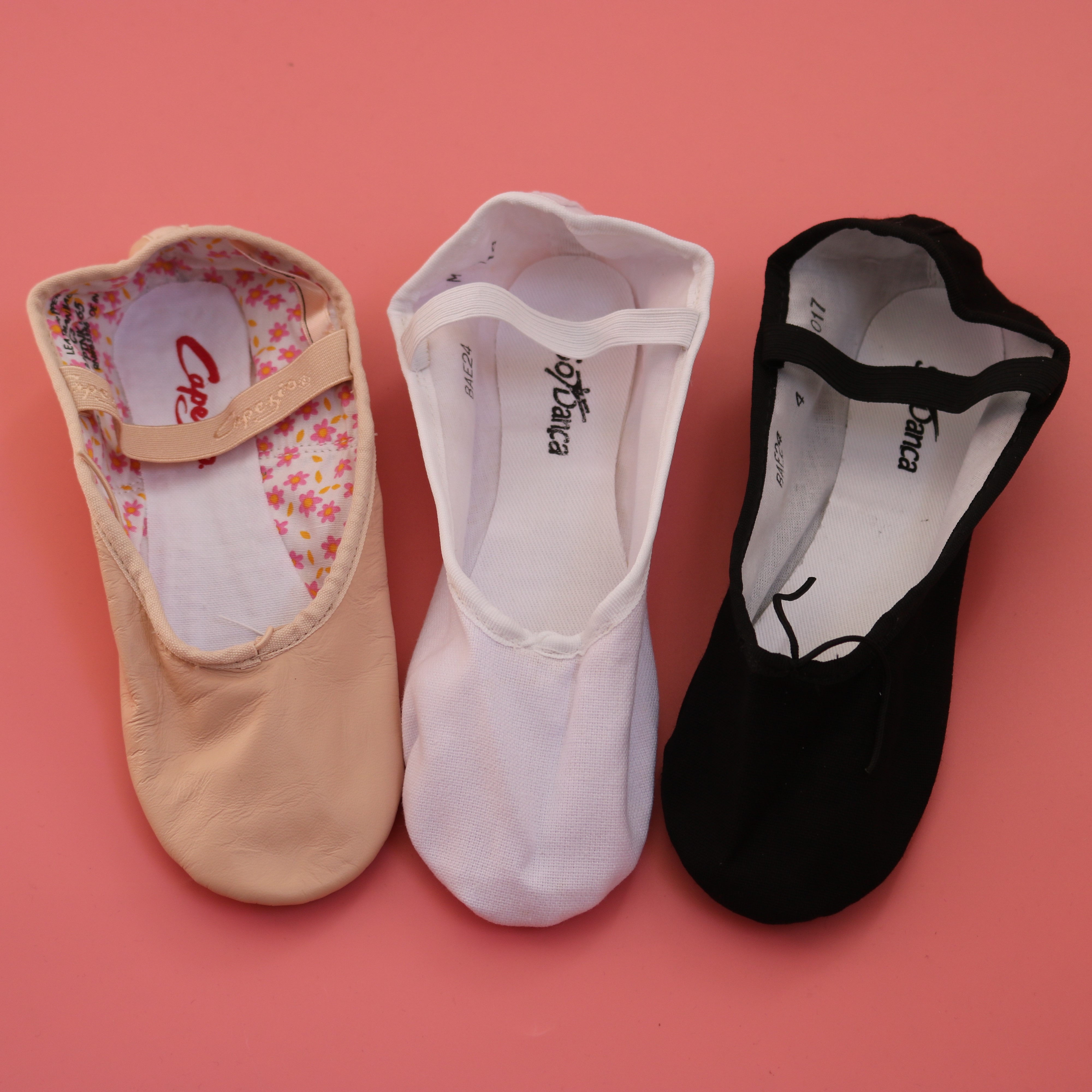16th Mar 2021
Which Ballet Shoes are right for me!
Buying ballet shoes can be very confusing, which style to buy? What material? Which manufacturer? And what type of sole to choose! Your dance teacher is your first port of call and will advise what you need. In this blog I will give you a quick guide on what the main differences are when choosing a ballet shoe.
Colour
Ballet shoes can come in a range of different colours but the normal three colours you see in most shops are pink, white, and black. Which colour you wear usual depends on which your teacher recommends for class (most dance schools like to have all dancers in the same colour). The traditional colours are pink for women and white for men. However, some schools use black shoes as class shoes as these usually look good longer due to the colour not showing up dirt the way the other two do. They then use pink or white for exams, shows and competitions.
Sizing
Ballet shoes should fit like a glove – snug and moulded to your foot, but not so small that it hurts, and you cannot stretch your foot properly. When trying on a pair of ballet shoes stand in first position with your feet flat on the floor and tie the elastic so the top of the shoe is fitted. Your toes should be flat on the floor, not curled up inside the shoe, if this is the case, they are too small. Next, rise onto the balls of your feet and feel if the back of the shoe has stayed in place on your heel and that you still have a little bit of room to move your toes.
Most UK manufacturers advise to order your normal UK street size however, with US manufacturers I would always recommend going up one size from your normal street size. Always read the item description and look for any advice regarding sizing. With children's ballet shoes you may want to order up half to a full size to allow for growth. Especially very young children whose feet are growing so quickly. However, they should not be baggy or floppy where they could cause tripping and falling. Please bear in mind also that for examinations teachers will prefer that the shoes fit snugly as they look better, and the examiner can see the child’s foot clearly.
Shoes can come with elastics sewn in, half sewn or not attached at all. Some people prefer just one piece of elastics sewn across the top of the foot. Others prefer two pieces of elastic which are sewn so they criss-cross the top of the foot. The advantage to this is if one elastics pops off then the shoe will still stay on the foot as its held by the other elastics, a must for exams and competitions!
Width
Ballet shoes also come in different widths. The most common is ‘M’ for medium or standard width which works for most dancers. However, not all feet are the same and some dancers need a ‘N’ narrow fit or ‘W’ wide fit. Different manufacturers use different letters or numbers for different widths so always read the description when buying shoes and if you are not sure ask.
Material – Canvas, Leather or Satin
The type of material you chose for your ballet shoes is usually down to personal preference and can change over the years. Some dance teachers may recommend or insist on certain types so it is always best to check with your teacher.
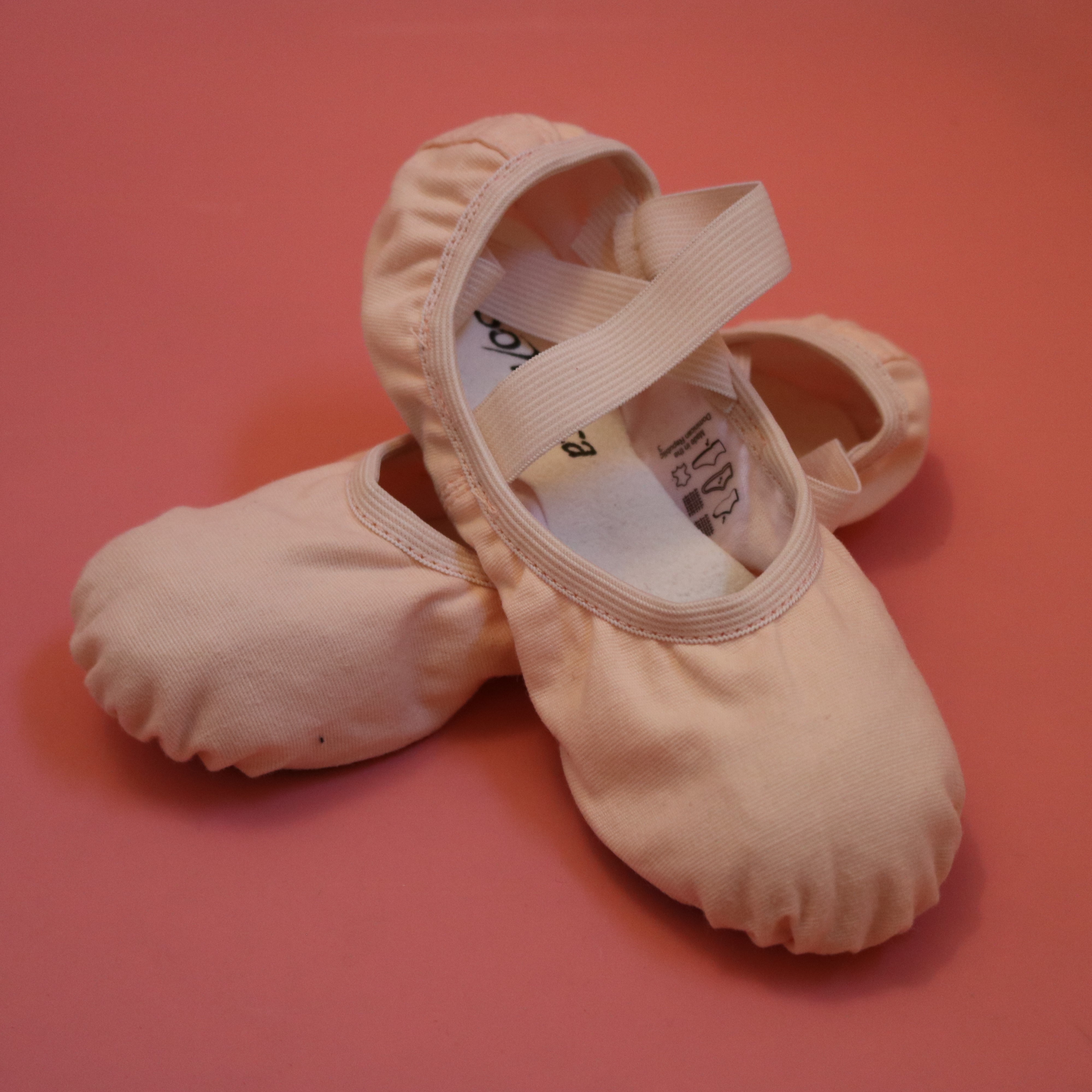
Canvas ballet shoes are probably the most popular ballet shoes for general classes / beginners and are the most suitable for dancing on vinyl floors. You can also wash canvas shoes (always follow advised instructions with the shoes as canvas shoes have been known to shrink in the washing machine).
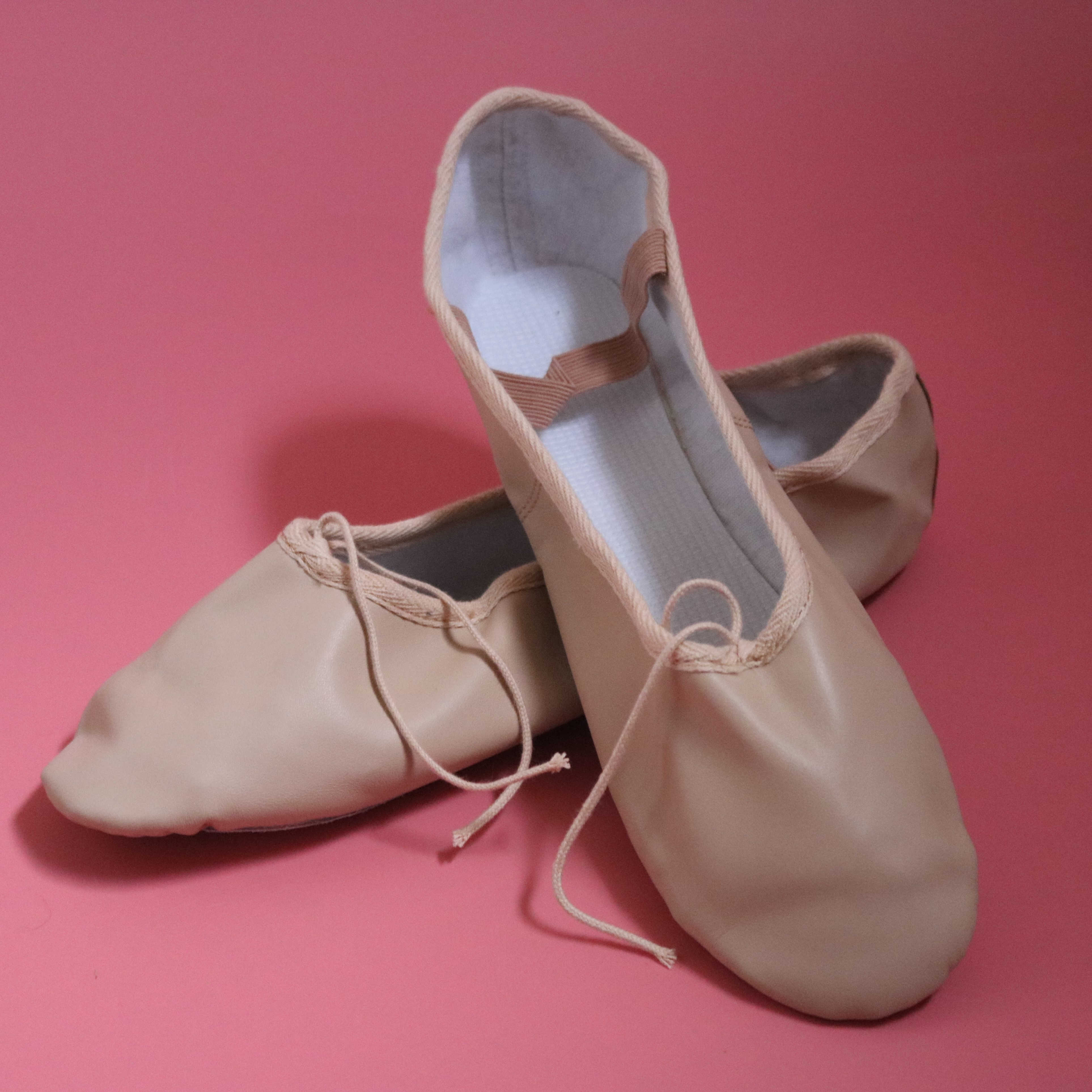
Leather ballet shoes are the most durable out of the three types and are usually a bit more expensive. They are usually preferred by more advanced or frequent dancers due to the fact they last longer, and some prefer the look of feet in a leather shoe.
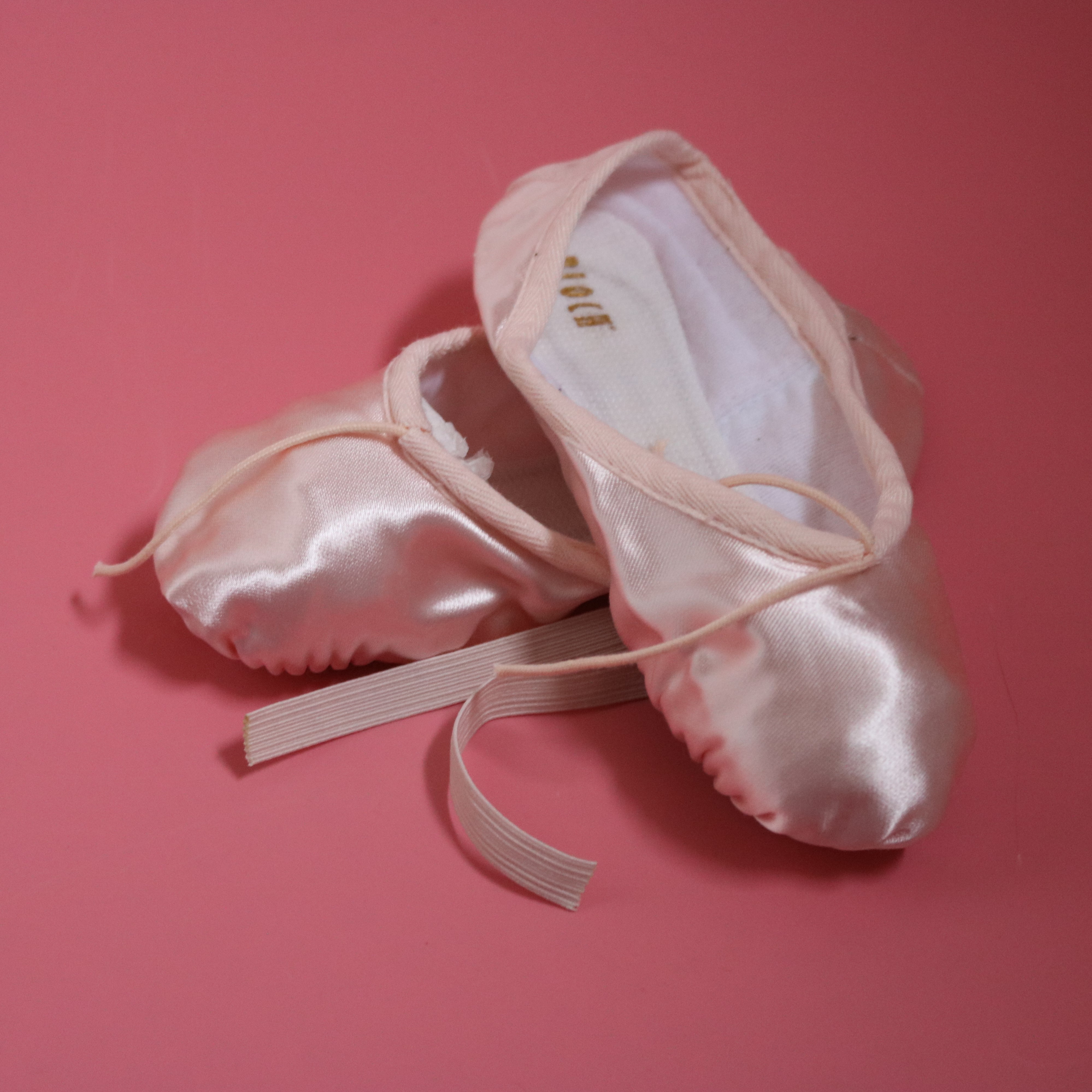
Satin ballet shoes are the least durable type but are preferred for performances as they often look the better on stage. They can also great as they can easily be dyed to match an outfit or costume e.g. if you need a pair of green shoes for Wicked.
Sole – Full or Split
Beginner dancers are always recommended to start with a full sole pair of ballet shoes as they will help support the arch of the foot. They also help the foot to achieve pointe as their feet develop and strengthen over time.
As time moves on most dancers will move onto split sole ballet shoes which allow much more flexibility and movement within the foot. Split sole ballet shoes also add the how pleasing the arch looks when pointed.
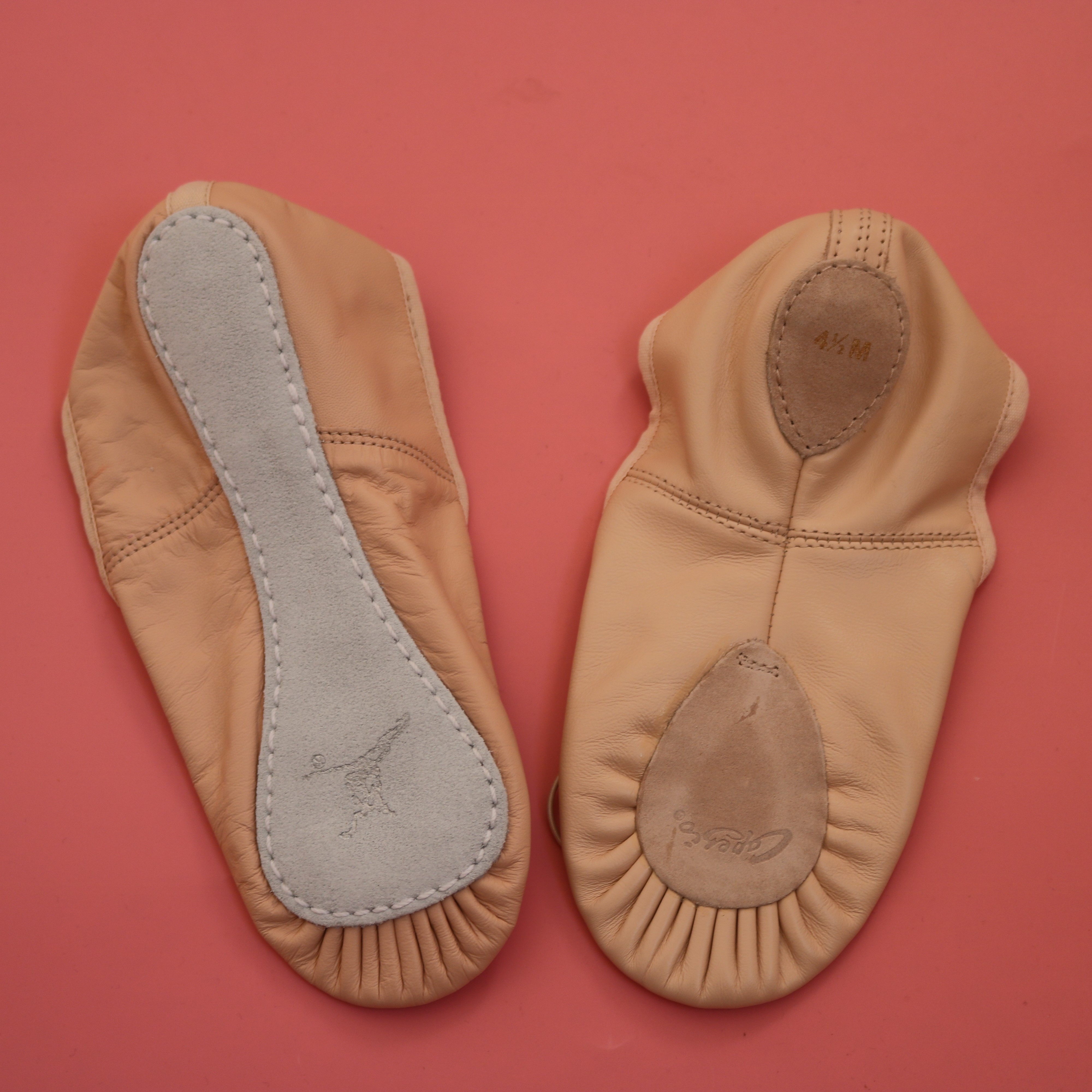
So now you have decided on which colour you need, the fit, the type of material and sole type so are ready to head off and dance…..

